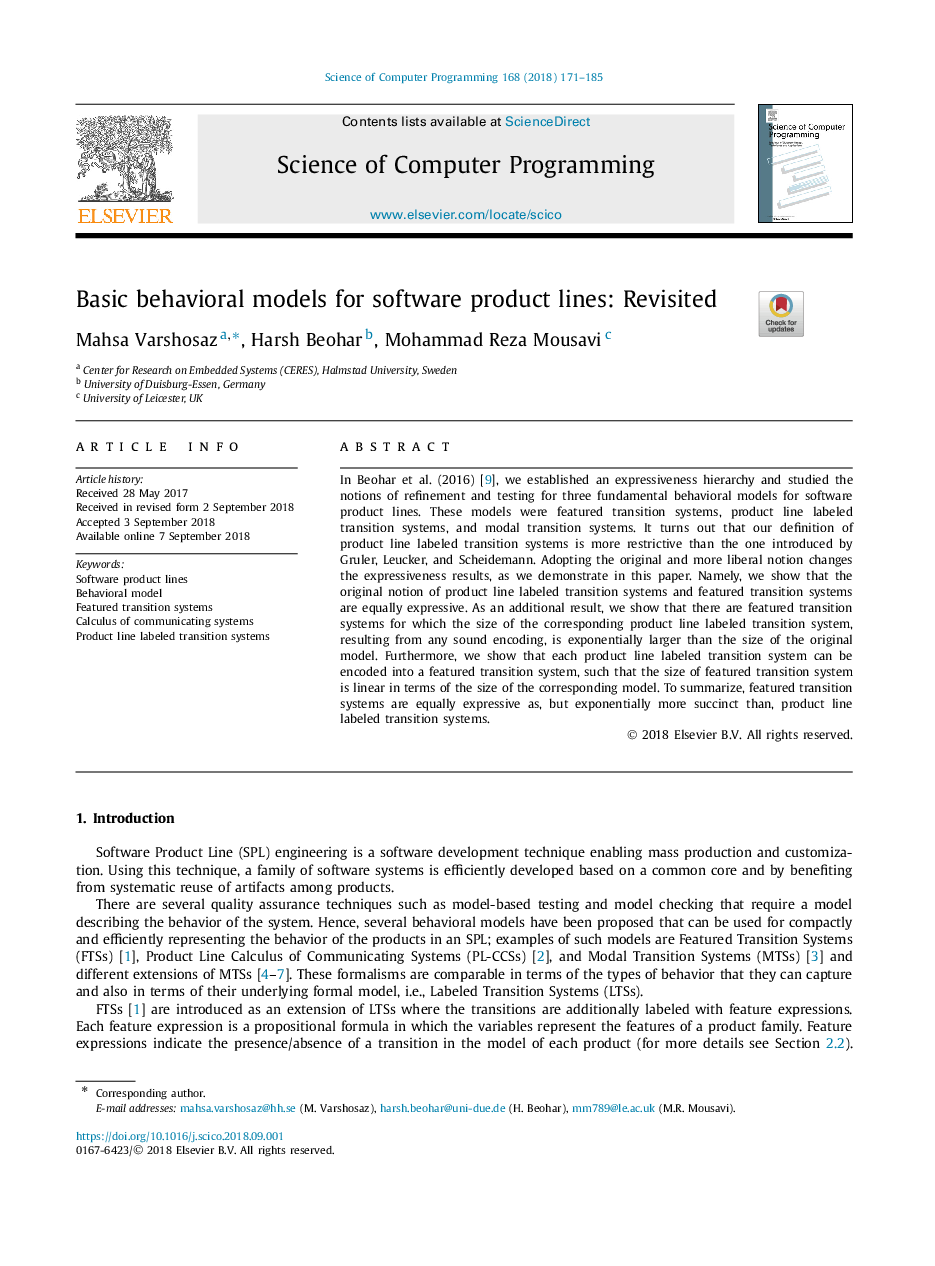| Article ID | Journal | Published Year | Pages | File Type |
|---|---|---|---|---|
| 11030117 | Science of Computer Programming | 2018 | 15 Pages |
Abstract
In Beohar et al. (2016) [9], we established an expressiveness hierarchy and studied the notions of refinement and testing for three fundamental behavioral models for software product lines. These models were featured transition systems, product line labeled transition systems, and modal transition systems. It turns out that our definition of product line labeled transition systems is more restrictive than the one introduced by Gruler, Leucker, and Scheidemann. Adopting the original and more liberal notion changes the expressiveness results, as we demonstrate in this paper. Namely, we show that the original notion of product line labeled transition systems and featured transition systems are equally expressive. As an additional result, we show that there are featured transition systems for which the size of the corresponding product line labeled transition system, resulting from any sound encoding, is exponentially larger than the size of the original model. Furthermore, we show that each product line labeled transition system can be encoded into a featured transition system, such that the size of featured transition system is linear in terms of the size of the corresponding model. To summarize, featured transition systems are equally expressive as, but exponentially more succinct than, product line labeled transition systems.
Related Topics
Physical Sciences and Engineering
Computer Science
Computational Theory and Mathematics
Authors
Mahsa Varshosaz, Harsh Beohar, Mohammad Reza Mousavi,
